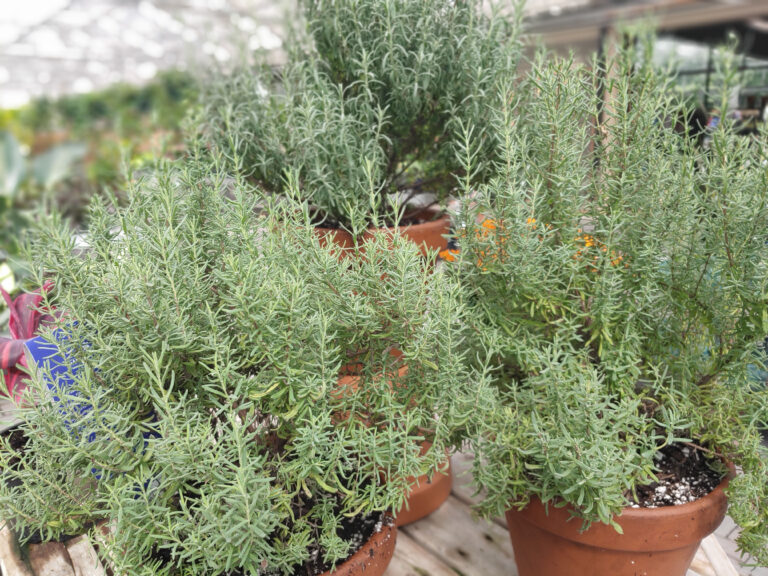Tropical & Tender Plants Move Indoors

Tropical plants will suffer when night-time temperatures slip below 40 degrees F. Plan to bring in your houseplants when temperatures are forecast below 45 degrees F to protect them from stress and cold damage. Tender perennial herbs like Rosemary or Lemon Verbena can be brought indoors as well for winter cooking. It’s best to start the process in late August and plan to finish by mid-September when it gets cold at night.
Bringing Your Houseplants Back Inside
- Preparation: First, get the winter growing area ready by washing windows, inside and out; putting up shelving; and setting up humidity trays. If plants need repotting, sterilize the new pots and have soil and fertilizing supplies ready.
- Before returning plants inside, inspect the tops and undersides of leaves, the stem, and soil. Treat them for found pests while still outdoors as appropriate. Outside the pot or on the bottom you may find unwanted inhabitants. To lure pests out, soak the pot for 15 minutes in lukewarm water. If too many emerge from the soil, consider repotting with fresh soil and place fine mesh screen over the bottom hole to limit access next summer.
- Now is a good time to take 3 – 4 inch cuttings of annual flowers, such as impatiens, begonias, geraniums or coleus. Choose healthy new growth. These root easily in damp sand or even a glass of water. A quick dip in rooting hormone helps as well. Transplant into small pots after roots appear.
- You will want to acclimate your plants gradually to conditions indoors. Sudden changes in temperature, light and humidity can bring on yellowing leaves, stem dieback or even plant death. If nighttime temperatures are forecast below 45 degrees, move plants into a protected area away from drying heat sources. Allow air circulation from a window during warm days. Gradually increase the time spent indoors, just the reverse of hardening plants in spring.
- Try to mimic the plant’s outdoor lighting conditions at first to prevent shock. Usually plants will lose a few leaves if the light changes dramatically but new ones should form as the plant adapts.
- Over-watering may be the biggest initial problem. Let the soil surface dry to the touch before watering again. Lower light levels and less direct sunlight mean the soil will not dry out as quickly. Readjust your watering routine accordingly.
- Later into the season as indoor heating systems start running, you will want to use a humidity tray to create ambient humidity around your tropical plants. A humidity tray is a flat dish or 1″ deep tray of pebbles that can hold water. Setting a potted plant onto the pebbles keeps the plant out of excess water but allows water to evaporate around the plant and provide a more humid environment.
- Finally, encourage plant health with a boost of fertilizer and help it cope with the stress of a new location.
- See this post about spotting pests on your houseplants.
Spring Gardening Tips
The garden is waking up, and you're in charge! It's time to start planting, pruning, and preparing your flower beds.
Spring Articles